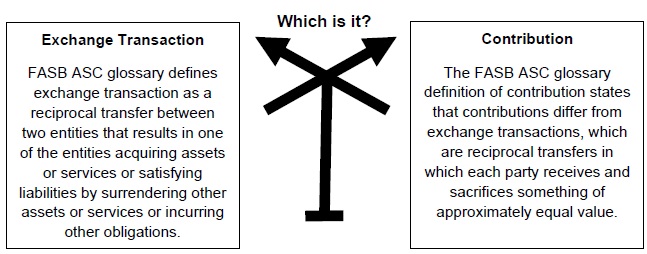Chapter 5 DISTINGUISHING CONTRIBUTIONS FROM EXCHANGE TRANSACTIONS
LEARNING OBJECTIVES
After completing this chapter, you should be able to do the following:
- Analyze the thought process used to distinguish contributions from exchange transactions.
- Distinguish the accounting differences between contribution and exchange transaction revenues.
- Identify indicators useful in distinguishing contributions from exchange transactions.
TECHNICAL BACKGROUND INFORMATION
Not-for-profits receive inflows of resources from others to support their missions. This sounds simple enough, but it often is not. Different resource inflows have different accounting and reporting requirements. In some situations, it is difficult to distinguish one type of resource inflow from another. A common area of consternation is trying to distinguish contributions from exchange transactions.

In some situations, exchange transactions can be distinguished easily from contributions, but in other cases, the determination is not as clear-cut.
The Exercise of Judgment
Classifying asset transfers as exchange transactions or as contributions may require the exercise of judgment concerning whether a reciprocal transaction has occurred; that is, whether a recipient not-for-profit has given up assets, rights or privileges approximately equal to the value of the assets, rights, or privileges received. Value should ...
Get Case Studies in Not-for-Profit Accounting and Auditing now with the O’Reilly learning platform.
O’Reilly members experience books, live events, courses curated by job role, and more from O’Reilly and nearly 200 top publishers.

